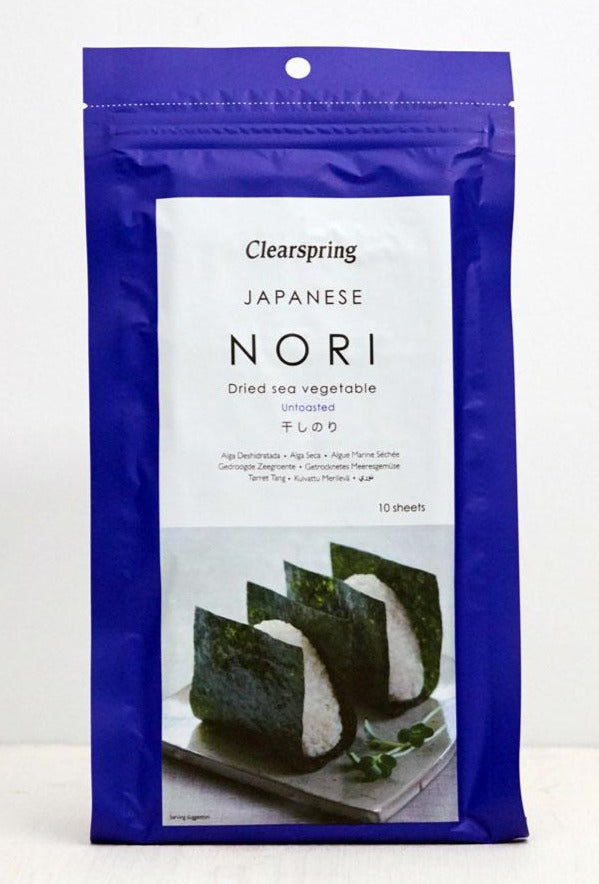Japanese Nori - Dried Sea Vegetable (Untoasted) 25g
Save Liquid error (snippets/product-badge line 32): Computation results in '-Infinity'%
Ingredients: Dried Nori sea vegetable (Pyropia yezoensis)
Due to the nature of the product, this pack may contain a trace amount of fish, molluscs and/or crustaceans.
Called "hoshi nori" in Japanese, these purple looking sheets require a brief toasting by unfolding the sheet and holding it over a gas flame or electric burner until it begins to turn green. They make an ideal snack or wrapping for rice or sushi rolls.
Torn or cut with scissors into thin strips, nori makes a tasty garnish for grain, noodle and vegetable dishes as well as soups and salads.
Like many foods, nori is available in different qualities. Lesser grades are a dull, purplish-black colour and lack the vibrant sheen of Clearspring Japanese Nori whose fine, even texture and translucent, deep-green colour are proof of its excellent quality.
Producing Clearspring Nori
Clearspring Nori sea vegetable is farmed and produced using traditional methods in Kyushu, Japan. While some varieties of sea vegetables such as hijiki, arame and dulse are harvested from the wild using sustainable practices, others such as nori are extensively cultivated in Japan and other East Asian countries.
Although originally gathered wild, nori has been cultivated in Japan for over 300 years. Nets made of woven rope impregnated with nori spores are suspended each year between long bamboo poles set deep into the calm, shallow bays. The height of each net is carefully set so that it remains above the water level during low tide, giving the growing nori maximum sunlight, but below the water level, so the plants receive a regular washing, at high tide.
During the colder months, the delicate nori plants will grow until they cover the entire net. In late winter they are harvested and brought ashore, where they are washed, cut, made into thin sheets and dried.
To prepare:
Briefly toast each sheet over a gas flame or electric burner until it turns a vibrant green. Use to make sushi rolls, cut with scissors into quarters for wrapping rice balls or cut into thin strips for a tasty garnish for grains, noodles, soups and salads.


